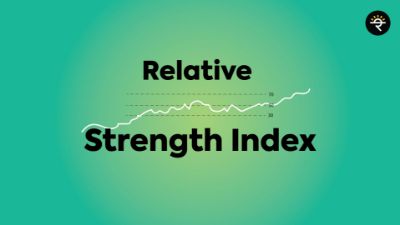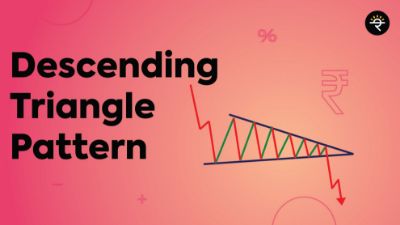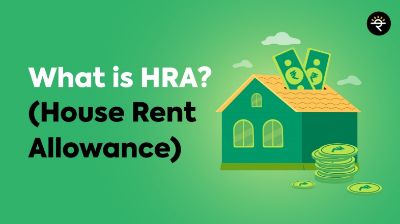It’s a bright sunny day. You are traveling from Bangalore to Pune by road. You have reached midway somewhere near Hubli when you stop for some rest and refreshment. What is the first thing that comes to your mind? Chai… That cup of tea freshens you up and you are ready to move north. Similar is the case in technical analysis. A cup and handle pattern is a chart pattern that takes the shape of a cup with a handle. It is a trend continuation chart pattern. The stock price is moving north. In between it takes a break, it forms a pattern that resembles a cup with a handle. After that break, the stock again starts heading towards north. The Cup with Handle formation was popularized by William J. O’Neil in his book “How to make money in stocks?”.
What is a Cup with Handle chart pattern?
As the name suggests a cup with a handle chart pattern is a pattern of price movement on the trading chart that looks similar to a cup with a handle. A “U” shaped price movement forms the cup section and a short price pullback from the edge of the cup forms the handle. The pattern shows the movement of the stock in the past and helps us predict the stock's movement in the future. However, this pattern takes time to form. The formation may be as short as seven weeks or as long as 65 weeks or more. A cup and handle pattern provides a logical entry point, a stop-loss level, and a profit target.
How to identify a cup and handle pattern?
The pattern can be formed in any timeframe. However, it is advisable to focus on the daily timeframe. Being a continuation pattern, there has to be a prior trend and the same needs to be understood first.
Identifying the bullish cup and handle pattern: - There must be an established uptrend for the bullish cup and handle pattern to form. However, the trend should not be a mature one as it would reduce its chances to continue. The cup is formed by a normal fall in prices that gradually reverses forming a “U” shape. It should have a bowl or rounding bottom and not a sharp “V” shaped bottom. A rounding bottom ensures that there is a consolidation with valid support at the bottom of the “U”. The pattern could have equal highs on both sides of the cup, but this is not a necessity. The depth of the cup is another lookout point. The cup should not be too deep.
The fall in security price that forms on the right side after the formation of the cup is the “handle”. It is a short pullback that slopes downward. This can be taken as a small consolidation before the big breakout. While the cup can extend from 7 to 65 weeks, the handle may take about 1 to 4 weeks to form. Let us try to understand this with the help of the following example -

A visible cup and handle pattern followed by a breakout can be seen in the above example of Kolte Patil Developers stock. The black line shows a small uptrend in the stock. The stock has reached Rs.277 from Rs.206. A normal fall in prices to Rs.132 and gradual reversal to Rs.277.3 breaking the previous high leads to the formation of the cup. There is a steady decline till the bottom and steady incline back to the previous high leading to a “U” shape cup and not a “V” shape cup. The security has created two highs near Rs.277 at the start and end of the cup, which is a typical characteristic of the cup. We can see that at the end of the cup, the security has faced a minor correction before giving a breakout at Rs.280. This minor correction is called “The Handle”. The breakout at Rs.280 is also giving a buy signal.
An important point needs to be noted. Volume data can be very helpful in both patterns. Volume should decrease during the formation of the pattern and there should be an increase when breakout/breakdown happens after the formation of the handle.
What can be an ideal entry, price target, and stop-loss?
The price which breaks out of the upper trend line is an ideal entry price (Rs.466 in our example). Security can be purchased at the close of the breakout candlestick. There are two target prices for this pattern. The first target is an estimated distance equivalent to the depth of the handle. The second target is equivalent to the depth of the cup, starting from the point of breakout. If after buying at the breakout, the price drops, instead of rising, a stop-loss order is needed. The stop-loss should be at a level that is below the lowest point of the handle.
Limitations of the Cup and Handle Pattern.
Every coin has two sides. Similarly, the cup with handle pattern also has certain limitations. The main disadvantage is the time taken to form a clear pattern. A fully developed pattern may take one to six months to form or even more. This might delay the investment decisions. The depth of the cup is another issue. In some cases, a shallower cup can give a strong bull run and, in some cases, a deep cup can be a false signal. In certain exceptional circumstances, Cups forming without handles also limit the utility of this theory. Like other technical patterns, the cup and handle pattern can be unreliable in illiquid markets.
Bottomline
The cup and handle pattern when formed in a nicely rising bull market, tests an old high and encounters selling pressure because of profit booking. The price gradually declines and consolidates over time because the selling pressure is not high. New buyers and old buyers see the reduction as an opportunity to take a long position in the market, leading to a gradual increase and retesting the high from where the pullback initially started. The more the consolidation, the bigger the breakout. It is advisable to use the cup and handle chart pattern with other technical indicators for the best decisions.
If you would love to understand the calculations that go behind Cup and Handle and how to use other significant indicators, make sure to check out my course on Technical Analysis. Until next time!

































